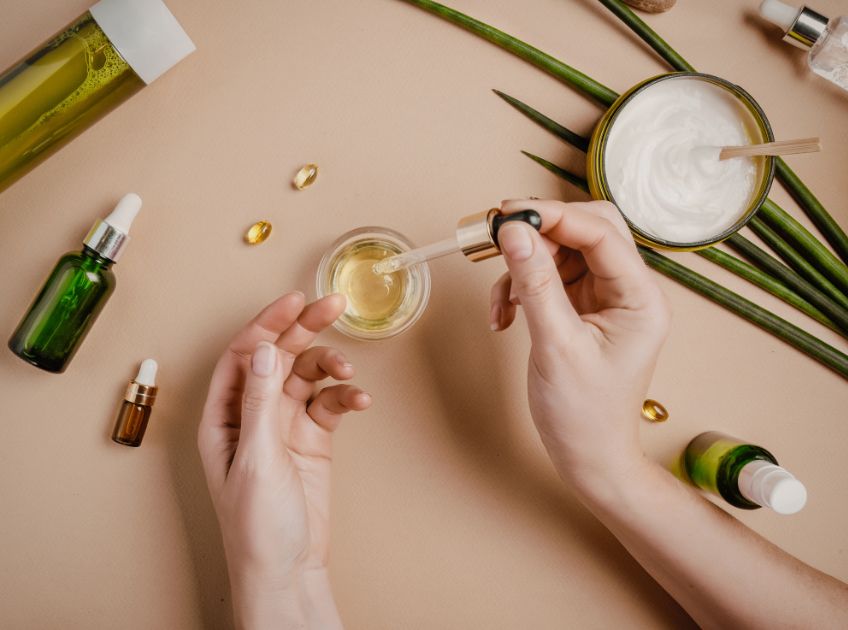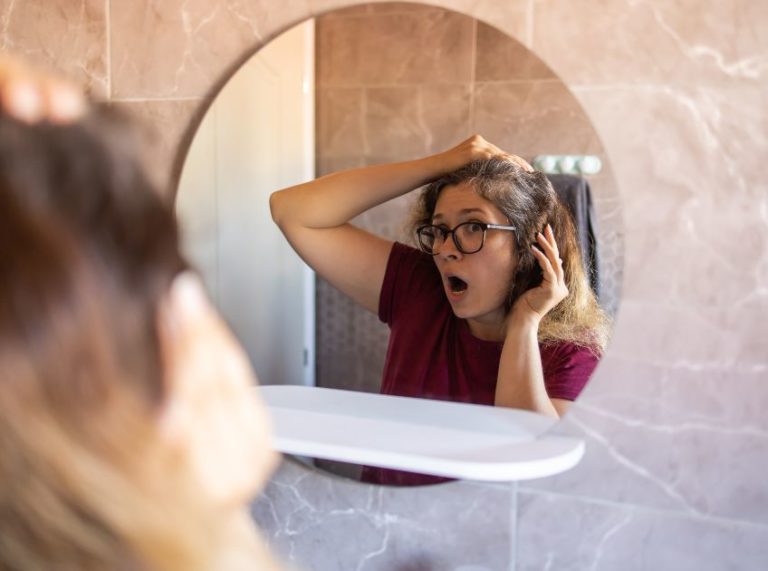
Important: This article is for informational purposes only. Please read our full disclaimer for more details.
Not only the skin, but your hair equally requires care. It is everyone’s dream to always have healthy and beautiful hair to look confident. To get into serious hair care, you need to follow a routine more than regular shampoo and conditioning. It is when the role of hair tonic or hair serum comes to play.
Hair tonics and hair serums are the two popular hair care products that offer multiple benefits. If you have been using them and wondering, can I use hair tonic and serum together, the article will give an insight.
Keep reading!
Hair Tonic

As we age, our scalp also ages. It is vital to provide nutrients to the scalp to restore the hair growth. A hair tonic is precisely designed to help revive blood circulation in the hair follicles for healthy hair growth (1).
Whether you are dealing with thinning hair, split ends, or hair fall more than usual, a hair tonic helps moisturize a dry scalp. It can add shine to your locks and reduce breakage and split ends.
There are different types of hair tonics, and their ingredients and composition are also different. Hair tonics have a runnier texture than hair serums, that is why many hair tonic products are packaged in sprays.
Benefits of Hair Tonic
- Makes hair shiny: Some of the hair tonics contain pentanol, a Vitamin B5 chemical. These components protect and maintain hair moisture to produce shiny, softer, and firm hair.
- Promotes hair growth: Usually, a hair tonic contains ginseng and aloe vera extracts. Both the ingredients aid in stimulating hair growth and reducing hair loss.
- Treat dry scalp: The petroleum jelly contained in hair tonic is the solution to the problem of dry scalp.
- Reduce split ends: Hair tonic contains glycerin, which can strengthen hair ends to prevent split ends.
Hair Serum

Hair serums are light yet have an oily texture. They are designed to assist with styling and making hair silky and smooth without being greasy. Often, they are composed of a high concentration of beneficial ingredients (2).
Hair serums play the best role in the hair care step and could be an ideal inclusion to your routine, especially if your hair is dry, frizzy, or dull.
Usually, hair serum is used for styling. It covers the hair’s surface to provide various benefits. Different hair serums contain silicone and active ingredients to maintain the hair. These active ingredients include:
- Argan oil
- Jojoba oil
- Onion seed oil
- Moringa oil
- Vitamin E
- Aloe vera
- Virgin coconut oil
- Rose water
Benefits of Hair Serum
- Provides shine: Hair serums bring dry, dull-looking hair back to life by filling moisture into hair strands. Healthy, moisturized hair tends to be silky and glossy. Some hair serums may also have ingredients that can reflect light.
- Manages frizzy and dry hair: Hair serum can help manage damaged hair that looks brittle, dull, and frizzy. The silicone present in many of the hair serum products can establish a protective layer around the hair shaft. This helps secure the hair and provide it with proper moisture and hydration.
- Prevents tangles: Hair serum helps to detangle hair by making it smooth and silky. It makes combing hassle-free and prevents hair breakage.
- Enhances hair texture: They help in improving the natural texture of hair by giving it a more defined and polished look.
- Protects against damage:The protective layer of the hair serum helps protect the hair from damage caused by heat styling, dust, pollution, and UV rays from the sun. That is why people apply serums to their hair strands before using any heat-styling tools, such as straighteners, curlers, and dryers. It helps to protect and recover the elasticity and strength of the hair strands.
Can Hair Serum and Hair Tonic Be Used Together?
Yes, hair serum and hair tonic can be used together. Using both products can provide your hair with many added benefits. While hair serums provide moisture, shine, and nutrition to the hair strands (3), hair tonic helps control hair loss, promotes hair growth, and nourishes the scalp (4).
It is very important to be conscious of the ingredients both products contain and their purposes to make sure that they work best together. Some hair products may contain active ingredients that may or may not work well with each other.
How Do You Use Hair Tonic and Hair Serum Together?
Both hair tonic and hair serum work to improve hair, but they have different application techniques. Their technique focuses on the particular area of hair where they repair and improve the damage. Hair tonic is applied on the scalp, whereas hair serum works along the length of the hair.
Firstly, apply the hair tonic to your scalp, as it is designed to work on the roots and follicles of the hair. Let your scalp absorb the hair tonic for a couple of minutes. Now, you can apply the hair serum to the length of your hair strands.
Conclusion
There are hundreds of hair serums and tonics available on the market. Be mindful of the products that you are buying, because few may contain chemicals that are harmful for your hair. It is always advised to avoid using hair tonics and serums too much. It can result in build-up of products on the scalp.
Image Source : canva
Related Articles
- How Castor Oil Can Treat Your Hair From Scalp
- 7 Best Oils For Dry Gray Hair
- How Fish Oil Control Hair Loss?
- Does Mayonnaise Hair Mask Work? How to Use IT















